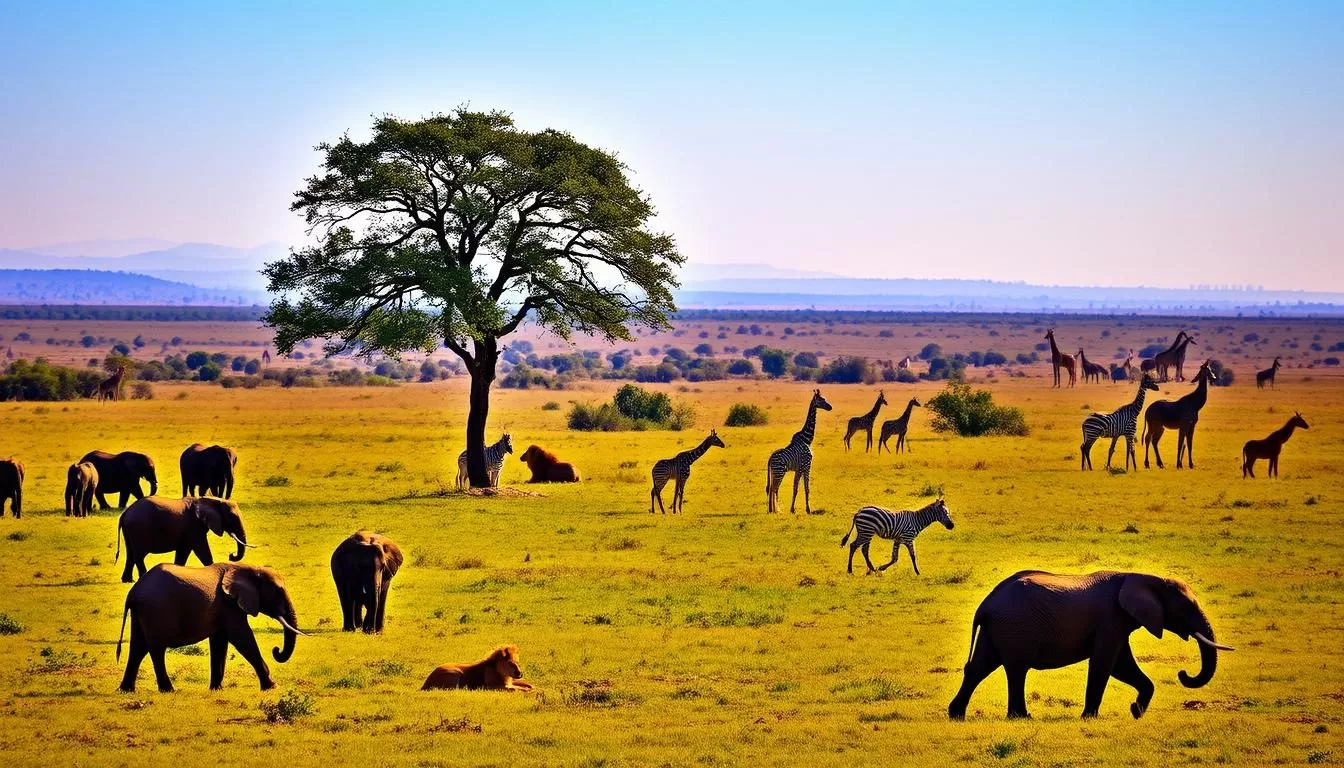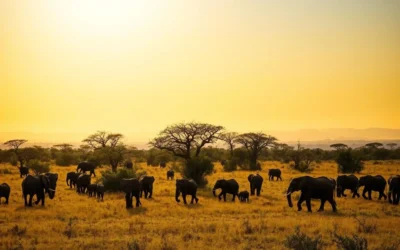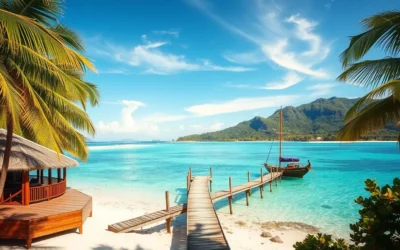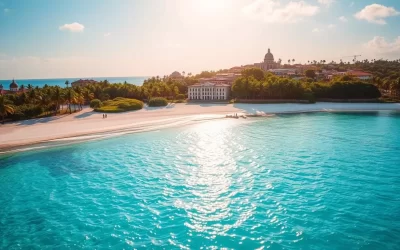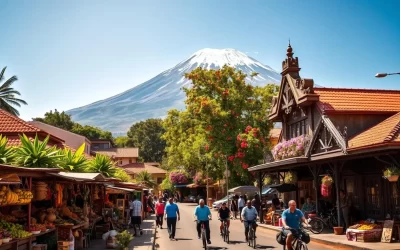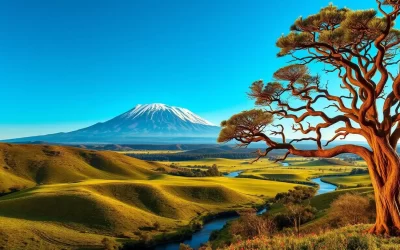Welcome to Nyerere National Park, Tanzania’s largest wildlife sanctuary and one of Africa’s most impressive wilderness areas. This vast wildlife reserve, formerly known as Selous Game Reserve, is a UNESCO World Heritage Site, boasting an abundance of wildlife, including the Big Five, giraffes, hippos, and a plethora of plains game.
As you plan your Tanzania safari, you’ll want to experience the diverse range of activities available, from classic game drives to unique experiences like hot air balloon safaris. With its rich biodiversity, including endangered African wild dogs, Nyerere National Park offers an authentic and less crowded safari experience.
Discover the best time to visit and how to make the most of your journey to this remarkable destination, ensuring an unforgettable adventure in the heart of African wildlife.
Discovering Tanzania’s Largest Wildlife Haven
As you step into Nyerere National Park, you’re immediately immersed in Tanzania’s vast and untouched wilderness. This expansive national park, formerly known as Selous Game Reserve, is a true marvel of nature.
What Makes Nyerere National Park Special
Nyerere National Park stands out due to its diverse ecosystems, including savannah, woodland, riverine forests, and wetlands. The park’s remote location in southeastern Tanzania provides a truly wild and untouched safari experience. Some of its notable features include:
- Vast landscapes that are twice the size of the Serengeti
- A variety of wildlife habitats, supporting a rich biodiversity
- Untouched areas, offering a glimpse of Africa as it has existed for millennia
From Selous Game Reserve to UNESCO World Heritage Site
In 2019, the Tanzanian Government renamed Selous Game Reserve to Nyerere National Park, honoring Julius Nyerere, Tanzania’s first president. This change marked a significant shift towards photographic tourism and strengthened conservation efforts. The park’s UNESCO World Heritage status recognizes its exceptional natural beauty and importance for biodiversity conservation in East Africa. 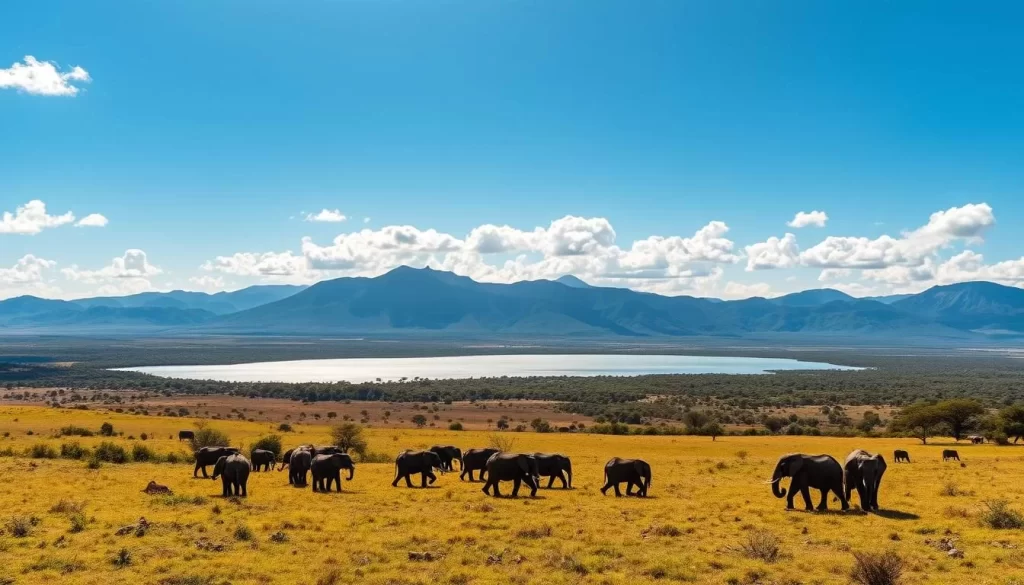
The transition has improved anti-poaching measures, protecting the area’s rich wildlife and ensuring the park’s continued prosperity.
Game Drives: The Ultimate Safari Experience
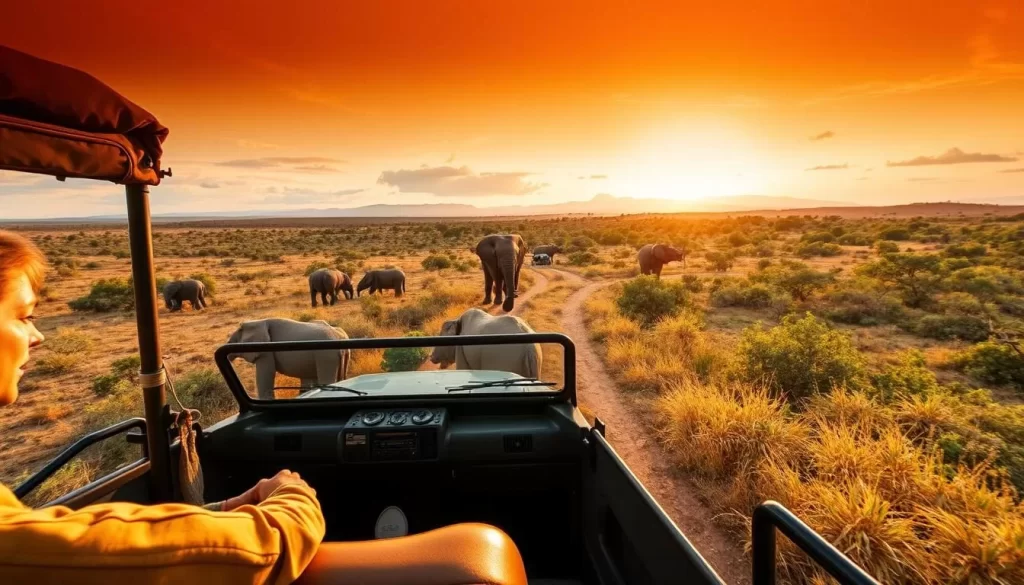
Game drives are the cornerstone of any safari experience in Nyerere National Park, Tanzania. They offer the most comprehensive way to explore the park’s vast landscapes and diverse wildlife.
Day Game Drives Through Diverse Landscapes
Day game drives typically depart in the early morning and late afternoon when animals are most active, maximizing your chances of spectacular wildlife sightings. The park’s varied terrain—from open grasslands to dense woodland—provides different game viewing opportunities throughout your journey.
Night Drives for Nocturnal Wildlife Encounters
Unlike many other Tanzanian parks, Nyerere permits night game drives, offering a rare opportunity to witness nocturnal predators like leopards and hyenas on the hunt. Professional guides enhance your experience by tracking wildlife and sharing fascinating insights about animal behavior.
Some key highlights of game drives in Nyerere National Park include:
- Game drives form the cornerstone of any Nyerere National Park safari experience.
- The relatively low number of visitors means you’ll rarely encounter other vehicles, creating a more intimate and authentic safari experience.
- Specialized photography game drives can be arranged for enthusiasts, with vehicles specifically equipped for optimal camera positioning.
- Full-day game drives with picnic lunches allow you to venture deeper into remote areas.
Boat Safaris on the Mighty Rufiji River

A boat safari on the Rufiji River is an unforgettable experience, providing up-close encounters with wildlife in a serene aquatic setting. The Rufiji River, being Tanzania’s longest river, stretches over 370 miles and creates a lifeline through Nyerere National Park.
The many waterways in the park provide an excellent natural setting for boat safaris, both for big game viewing and bird watching. These water-based excursions typically last 2-3 hours and are offered at sunrise, midday, or sunset, each providing different wildlife viewing opportunities.
Wildlife Viewing From the Water
Expect close encounters with hippos, crocodiles, and elephants coming to drink, all from the safety and comfort of specialized safari boats. The Rufiji’s complex system of channels, lakes, and lagoons creates diverse habitats that support an extraordinary range of aquatic and terrestrial wildlife.
Your experienced boat guide will navigate safely among the hippo pods while sharing insights about the river’s ecology and the animals that depend on it.
Bird Watching Paradise Along the Riverbanks
The riverbanks serve as a bird watcher’s paradise with over 440 recorded species, including African fish eagles, goliath herons, and colorful kingfishers. Bird watching along the Rufiji River is a unique experience, with the river’s diverse habitats attracting a wide variety of birdlife.
Sunset boat safaris are particularly magical, offering spectacular photography opportunities as animals gather at water sources against the backdrop of Tanzania’s dramatic skies.
Walking Safaris & Nature Hikes
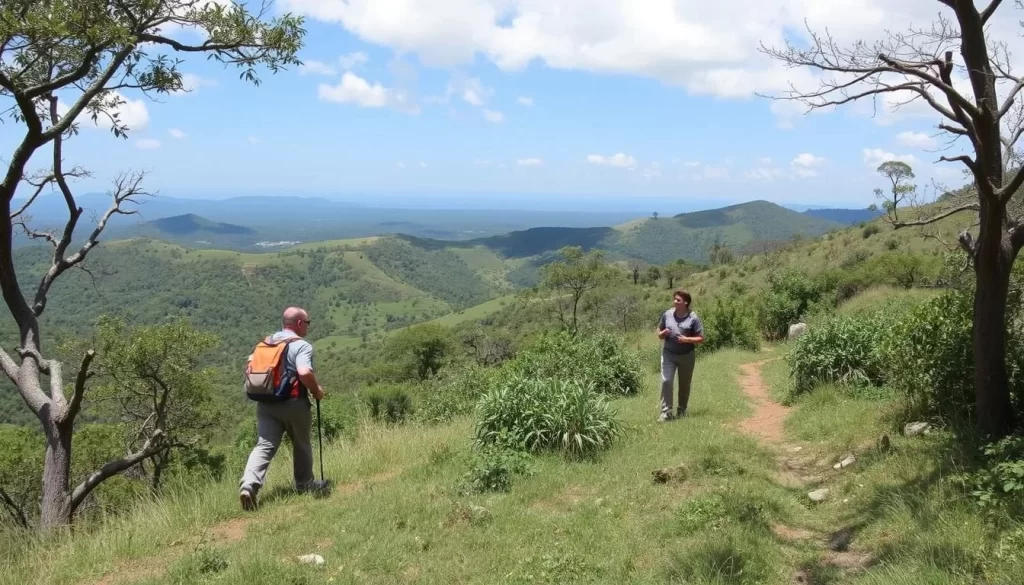
Step into the wild with guided walking safaris in Nyerere National Park, a true safari enthusiast’s paradise. Walking safaris offer an immersive way to experience Nyerere National Park, engaging all your senses in a manner that vehicle-based safaris cannot match.
Guided Bush Walks with Rangers
Guided bush walks are led by armed professional rangers and knowledgeable guides, ensuring your safety while tracking wildlife and interpreting the subtle signs of the bush. These on-foot experiences focus on the smaller details often missed from vehicles, such as animal tracks, insects, and medicinal plants.
Nature Walks Around Camp Areas
Nature walks around camp areas provide a gentler introduction to the bush, perfect for travelers who want a less strenuous but still authentic wilderness experience. These walks can range from 2-hour excursions to full-day adventures, with prices varying from $50 to $500 depending on time and exclusivity.
Hot Air Balloon Safaris: A Bird’s Eye View
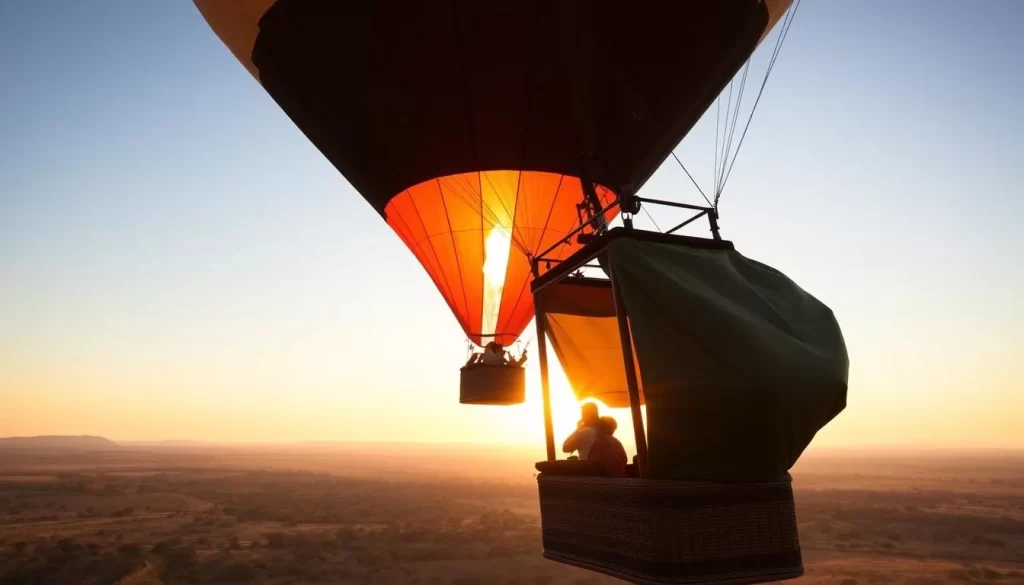
Take to the skies with a hot air balloon ride over Nyerere National Park, a truly unforgettable adventure. Hot air balloon safaris offer a magical perspective of the park, allowing you to soar silently above the vast wilderness at dawn.
Dawn Flights Over the Wilderness
These exclusive flights typically begin before sunrise, with pre-dawn preparations adding to the sense of adventure as you watch the massive balloons inflate in the darkness. Once airborne, you’ll drift with the gentle morning breezes for approximately one hour, floating over rivers, forests, and plains while spotting wildlife from above.
Champagne Breakfast in the Bush
After landing, a traditional champagne toast celebrates your flight, followed by an elegant bush breakfast set up in the wilderness—the perfect conclusion to this memorable experience. While hot air balloon safaris represent one of the more expensive activities in Nyerere National Park, most travelers consider it a worthwhile splurge for the once-in-a-lifetime perspective it offers.
Key Highlights of Hot Air Balloon Safaris:
- Hot air balloon safaris offer a truly magical perspective of Nyerere National Park.
- Drift with the gentle morning breezes for approximately one hour, spotting wildlife from above.
- A traditional champagne toast and elegant bush breakfast follow the flight.
- Advance booking is essential due to limited capacity.
Embark on this unique safari experience and witness the beauty of Nyerere National Park from a new and thrilling angle. With its serene and breathtaking views, a hot air balloon safari is an adventure you will never forget.
Cultural Experiences: Village Visits
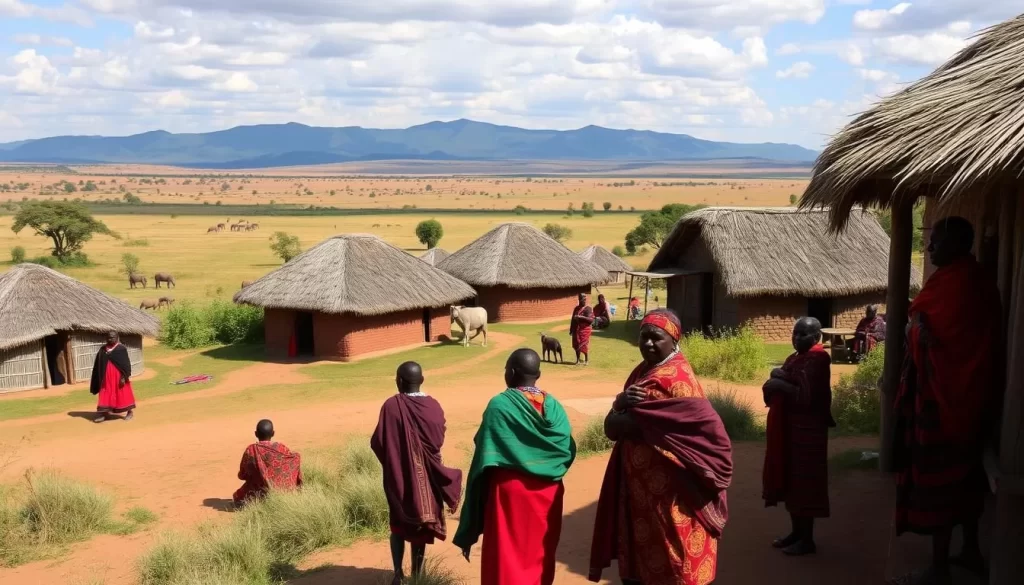
Beyond the wilds of Nyerere National Park lies a rich cultural heritage, accessible through visits to nearby villages. These visits offer a valuable cultural dimension to your safari experience, allowing you to connect with the human heritage of East Africa.
Learning About Local Traditions and Customs
During your village visit, you’ll be welcomed by community members and guided by an English-speaking local who will introduce you to their customs, daily activities, and traditional dwellings. You’ll learn about traditional crafts, medicinal plants, and sustainable living practices that have been passed down through generations.
Supporting Community Tourism Initiatives
These cultural experiences support community tourism initiatives that provide alternative income sources for local people and incentivize cultural preservation. Responsible village visits ensure that tourism benefits flow directly to communities, supporting education, healthcare, and sustainable development projects.
By participating in village visits, you’re not only enriching your journey but also contributing to the well-being of the local communities, making your travel more meaningful and impactful.
Wildlife Highlights in Nyerere National Park, Tanzania: Best Things to Do – Top Picks
Nyerere National Park is a wildlife enthusiast’s paradise, offering a diverse array of animals in their natural habitat. As you explore the park, you’ll have the opportunity to witness its awe-inspiring residents up close.
The Big Five and Beyond
The park boasts an extraordinary diversity of wildlife, including all members of the iconic Big Five—lions, elephants, buffalo, leopards, and rhinoceros. You can also expect to see large elephant herds, especially during the dry season when they gather around the Rufiji River and its tributaries.
Endangered African Wild Dogs
Nyerere National Park is particularly renowned for its endangered African wild dogs. Healthy packs denning in the area can be spotted between June and August, making it an ideal time for safari enthusiasts to visit. The park’s diverse habitats support a wide range of antelope species and other wildlife.
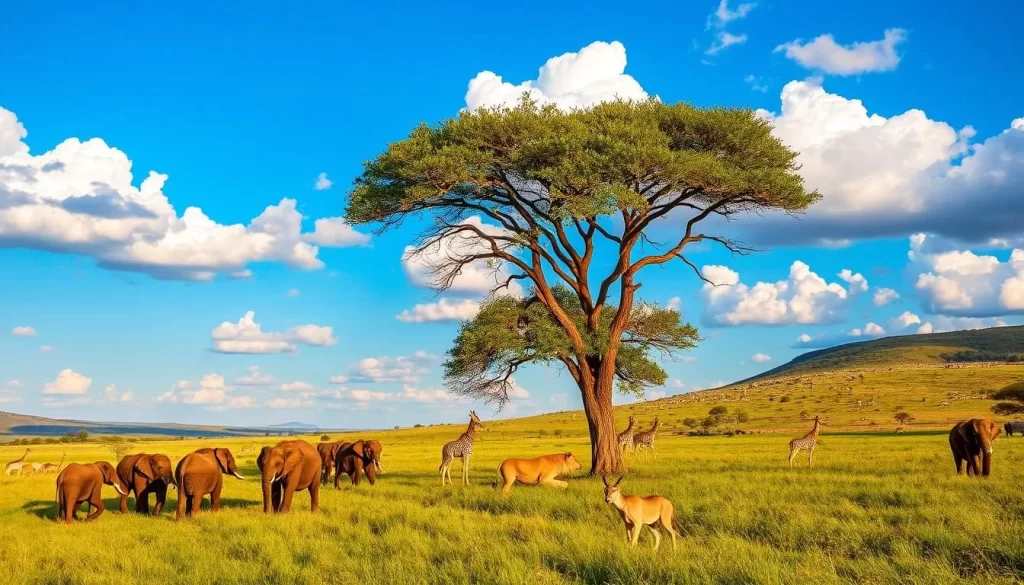
Planning Your Visit to Nyerere National Park
To make the most of your safari experience, it’s crucial to plan your visit to Nyerere National Park carefully. This involves understanding the best time to visit, how to get there, and what to expect in terms of costs and accommodations.
Best Time to Visit
The optimal time to visit Nyerere National Park is during the dry season, from June to October. During this period, wildlife concentrates around water sources, making it easier to spot animals. While the park can be visited year-round, the green season offers lush landscapes and fewer visitors.
Getting There: By Air and Road
You can reach Nyerere National Park by flying into Julius Nyerere International Airport in Dar es Salaam and then taking a domestic flight or traveling by road. The road journey takes around 5-7 hours, depending on the conditions.
Entry Fees and Accommodation Options
Entry fees for foreign visitors are $50 for adults and $30 for children, with an additional $25 daily concession fee. Accommodation options range from luxury lodges to budget-friendly choices, many of which are all-inclusive packages.
| Category | Entry Fee | Concession Fee (per day) |
|---|---|---|
| Adults (Foreign Visitors) | $50 | $25 |
| Children (5-15 years) | $30 | $25 |

Conclusion
With its unique blend of wildlife, landscapes, and cultural experiences, Nyerere National Park stands out as a premier Tanzania safari destination. The park offers a wide range of activities, from game drives to boat safaris, ensuring every traveler finds their perfect wilderness experience. Whether you visit during the wet or dry season, the park’s diverse landscapes and rich wildlife make it an unforgettable adventure.
The above is subject to change.
Check back often to TRAVEL.COM for the latest travel tips and deals.
